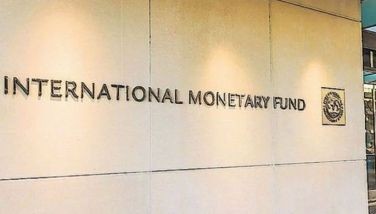Lorenzo seeks FAO support in row with EU over marine products
January 31, 2003 | 12:00am
Agriculture Secretary Luis Lorenzo Jr. urged the Food and Agriculture Organization-United Nations (FAO-UN) to foil an attempt by the European Union (EU) to impose more stringent rules for the entry of marine products through a new food code or standard.
EU is pushing for the setting of maximum levels (MLs) for lead in fish, shellfish and other marine products when the Codex Alimentarious Commission (CAC) Committee on Food Additives and Contaminants (CCFAC) holds a plenary meeting from March 17-21 this year in Tanzania. The CCFAC meeting is a prelude to the CAC round in July to be held in The Netherlands.
CAC is the international body tasked with developing a food code known as the Codex Alimentarius, the global reference point for harmonized or uniform food standards to ensure the protection of public health and fair practices in the food trade. CAC will also finalize new food safety checks on other products, including dairy, meat, food crops, vegetables and plants.
"The Philippines recommends that the CCFAC discontinue work on a proposed ML for lead in fish as current risk assessment and other information indicates there is no basis to do so from the point of view of risk to human health and problems in trade," said Lorenzo in a letter to David Byron, head of the Codex Secretariat under FAO-UN.
The EU proposed last year to the CCFAC to put the new ML of lead contaminants on fish, marine and aquaculture products to 0.2 parts per million (ppm). The Philippines is pushing instead, to maintain the current ML of lead at 0.4 to 0.5 ppm.
Lorenzo told Byron that the EU proposal is unreasonable because "there is no internationally validated method of lead in fish that can analyze for lead at the proposed ML in a normal product control laboratory."
Moreover, Lorenzo said establishing a 0.2 ppm ML for lead in fish and other marine products contradicts existing Codex provisions which is specific that setting up MLs should be confined only to contaminants known to present significant risks to public health.
"Also, MLs should not be lower than a level which can be analyzed with methods of analysis that can readily be applied in normal product control laboratories unless public health considerations necessitate a lower detection limit," added Lorenzo.
Lorenzo also cited other Codex principles which states setting up MLs is possible if there is adequate information on known or expected problems in trade and data on relationship between lead exposure through fish consumption and health risks.
"There are currently no known problems in trade due to the presence of lead in fish. If an ML were established at 0.2 ppm, trade problems could result due to the lack of method for lead analysis at this level suitable to normal product control laboratories that is internationally-validated," Lorenzo said. – Rocel Felix
EU is pushing for the setting of maximum levels (MLs) for lead in fish, shellfish and other marine products when the Codex Alimentarious Commission (CAC) Committee on Food Additives and Contaminants (CCFAC) holds a plenary meeting from March 17-21 this year in Tanzania. The CCFAC meeting is a prelude to the CAC round in July to be held in The Netherlands.
CAC is the international body tasked with developing a food code known as the Codex Alimentarius, the global reference point for harmonized or uniform food standards to ensure the protection of public health and fair practices in the food trade. CAC will also finalize new food safety checks on other products, including dairy, meat, food crops, vegetables and plants.
"The Philippines recommends that the CCFAC discontinue work on a proposed ML for lead in fish as current risk assessment and other information indicates there is no basis to do so from the point of view of risk to human health and problems in trade," said Lorenzo in a letter to David Byron, head of the Codex Secretariat under FAO-UN.
The EU proposed last year to the CCFAC to put the new ML of lead contaminants on fish, marine and aquaculture products to 0.2 parts per million (ppm). The Philippines is pushing instead, to maintain the current ML of lead at 0.4 to 0.5 ppm.
Lorenzo told Byron that the EU proposal is unreasonable because "there is no internationally validated method of lead in fish that can analyze for lead at the proposed ML in a normal product control laboratory."
Moreover, Lorenzo said establishing a 0.2 ppm ML for lead in fish and other marine products contradicts existing Codex provisions which is specific that setting up MLs should be confined only to contaminants known to present significant risks to public health.
"Also, MLs should not be lower than a level which can be analyzed with methods of analysis that can readily be applied in normal product control laboratories unless public health considerations necessitate a lower detection limit," added Lorenzo.
Lorenzo also cited other Codex principles which states setting up MLs is possible if there is adequate information on known or expected problems in trade and data on relationship between lead exposure through fish consumption and health risks.
"There are currently no known problems in trade due to the presence of lead in fish. If an ML were established at 0.2 ppm, trade problems could result due to the lack of method for lead analysis at this level suitable to normal product control laboratories that is internationally-validated," Lorenzo said. – Rocel Felix
BrandSpace Articles
<
>
- Latest
- Trending
Trending
Latest




























